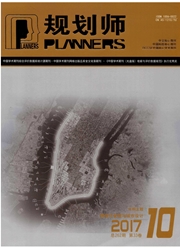

 中文摘要:
中文摘要:
西南山地常见的地貌形态有槽谷、岭脊、沟梁、丘陵四大类型,其相应的城镇形成了“带状”“团状”“串珠型”与“自由格网型”四种空间布局形态,各个布局形态下的交通组织存在着各种交通问题。据此,研究从相关规划视角,综合分析各种山地典型地貌城镇路网系统规划设计的具体策略,提出路网结构与城市形态的呼应、交通组织与城市功能的协调、道路布线与城市景观的结合等契合地貌特征的山地城镇道路系统综合规划策略,为其他山地城镇的规划建设提供借鉴。
 英文摘要:
英文摘要:
Western mountainous towns have four typical land forms: valley, ridge, ravine, and hill. Towns on these terrains have formed belt, agglomeration, cluster, and grid layout patterns. Different patterns have different transportation problems. The paper analyzes characters of different land forms, and proposes following planning strategies: correspondence between road structure and city form, coordination between transportation and city function, comprehensive planning strategies of road and landscape conforming to mountainous terrain. These strategies can be reference for other mountainous towns.
 同期刊论文项目
同期刊论文项目
 同项目期刊论文
同项目期刊论文
 期刊信息
期刊信息
